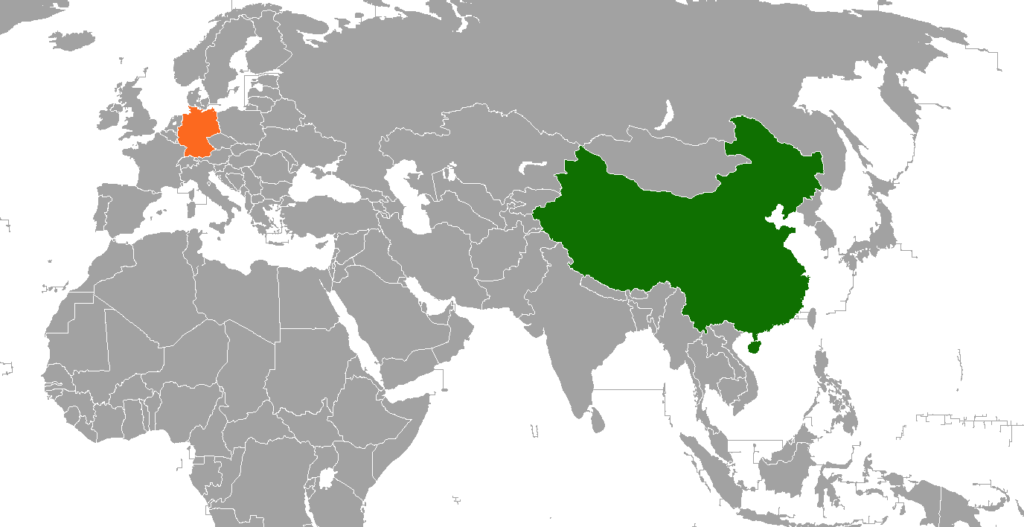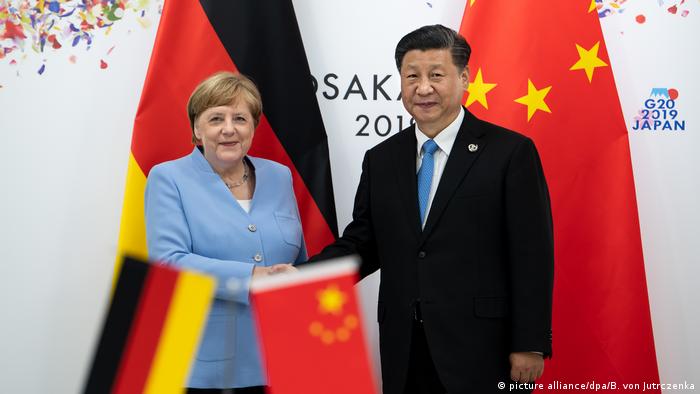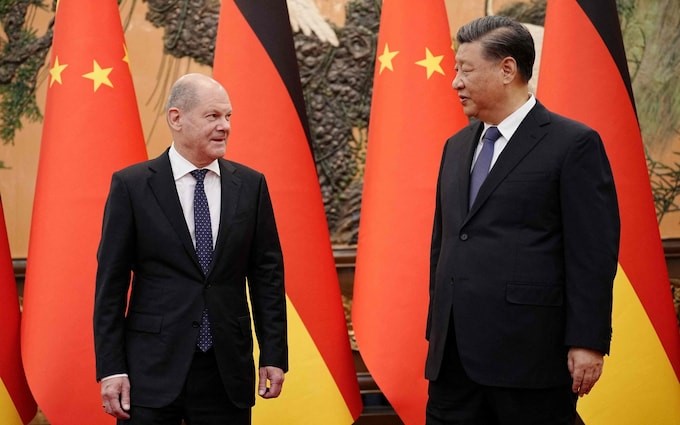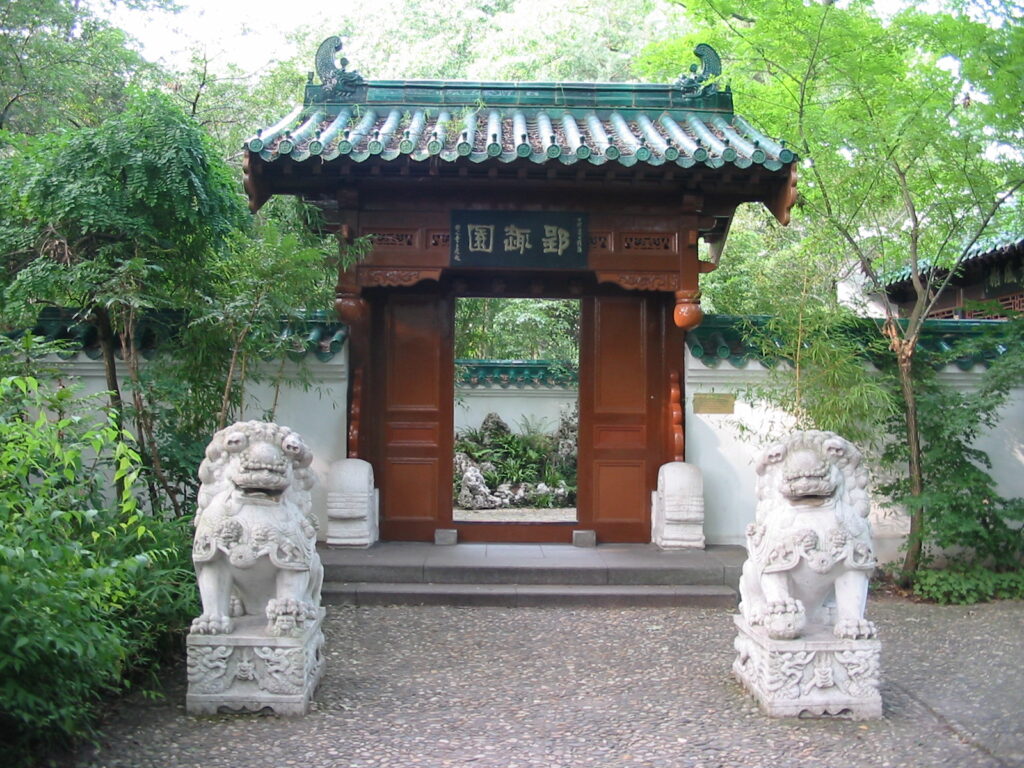With the increasing geopolitical tensions between the West and China, one would expect a weakening of their association, but the reality is far from that. Europe’s second most populous country, Germany, remains to be heavily dependent on China. China is Germany’s largest trading partner, replacing the United States of America in 2017. Germany is also China’s biggest technology exporter and trading partner in Europe since 2012, making Germany, China’s gateway to the West.
Formal ties were first established between Prussia (German kingdom) and the Qing Dynasty (Imperial dynasty of China) in 1861 with the Sino-German treaty. This treaty governed their relationship until World War I. The relationship during the late 19th and early 20th centuries was tense. Germany was a member of the Eight-Nation Alliance (a multinational military coalition that invaded Northern China in the 1900s) and participated in the suppression of the Boxer Rebellion (an anti-foreign, anti-colonial, anti-Christian uprising in China between 1899 and 1901).
Post World War I, their relationships gradually improved for a short span until the 1930s when Adolf Hitler allied himself with Japan. After World War II, Germany was divided between West and East Germany. The Cold War tensions led the liberal and democratic West Germany to ally with the U.S. whereas communist East Germany allied with China through the Soviet Union.
The relations have improved between the two countries after the German reunification in 1990. In 2006 both countries further enhanced bilateral ties within the framework of Sino-EU strategic partnerships.
Former German Chancellor, Angela Merkel, visited China on several occasions at the beginning of her term showcasing the importance of China to Germany. Since 2019, the relationship between China and the West has been going downhill due to the difference of opinion on various geopolitical issues.
Trade relations in Numbers
From January to October 2022, Germany’s imports from China reached $98 billion, growing 6.5 percent from the previous year. During the same period, China’s import from Germany was $93 billion, down by 5.6 percent. This slowdown was mainly due to factors such as rising energy prices and surging operational costs across Europe.
Approximately 5,000 German companies operate in China, with investments of about €90 billion ($88 billion). The Chinese market caters to around 30 to 40 percent of the sales of top German automakers which include companies like Mercedes-Benz, BMW, and Volkswagen.

Recent Events
German Chancellor Olaf Scholz visited Beijing on November 4, 2022, making him the first Group of Seven (G-7) leader to travel to China since the pandemic began. Before this visit, Scholz approved a deal for China to purchase a partial stake in Germany’s Hamburg port. Both these events led to criticism within the European Union, the U.S., and the German government coalition.
Despite the criticism faced, German companies continue to invest in China. China provides a vibrant industrial ecosystem along with a promising and viable market to explore various business opportunities in different sectors. China is a great market for innovation as well as it provides a huge domestic market for sales, something that German companies cannot ignore.
Although the two countries plan to expand their cooperation in the traditional sectors, they are also making efforts to increase ties in other areas like new energy, electronic vehicles, shipbuilding, artificial intelligence, and digitalization. Growth is expected in many industries which include the fields of e-mobility, connected driving, and decarbonization.

German participation at China International Import Expo (CIIE)
More than 170 German companies attended the CIIE in 2021. This year as well, many German companies showcased their plans to expand investment and business in China. Large German companies including Siemens, Mercedes-Benz, and Bosch attended the fifth session of the Expo. Many of these companies believe that their participation at the event opens various prospects as well as generates future sales for these companies.
Few examples of German investments in China
Evonik Industries, a German specialty chemicals company, recently opened its first global lithium-ion battery center in the Evonik Shanghai Innovation Park. They also plan to expand their existing research and development facilities in China as it is the fastest-growing market for specialty chemicals in the world.
The ZEISS Group, a German manufacturer of optical systems and optoelectronics, has attended CIIE five times. The company expects to expand its business in China as the growth rate of the Chinese Market was twice that of other markets in the past five to ten years. Nearly half of the number of people in the world with myopia are living in China. This means the demand for medical equipment will increase in the coming years in China. The company has thus set up two production bases in China and they plan on re-investing the Chinese earnings locally.
Wilo Corporate, a German manufacturer of pumps and pump systems for the building services, water, and industrial sectors, has recently built a production base in Changzhou (East China) expecting to start production by 2023. The products will be supplied to the Chinese market and exported to other markets as well.

Bayer, a German multinational pharmaceutical, biotechnology, and agricultural group, relocated its crop protection equipment production site to Hangzhou, to meet market demand in the Asia-Pacific region by 2025.
Karcher, a German cleaning equipment manufacturing company, has invested largely in China. In 2019, Karcher China headquarters were built in Changshu, east China, investing 380 million yuan. In 2022, they invested 100 million yuan in Suzhou Industrial Park to set up a global high-tech Research and Development center.
These are just a few examples of the various German companies which have taken interest in doing business with and in China due to the large market size as well as good connectivity to other Asian countries.
Many German companies have made China their global manufacturing base, to cash out their developing technologies and new products, as they cannot entirely rely on their internal market since their population is way lesser as compared to China.

Beyond trade
Germany and China share ties beyond business associations as well. Maximum number of international students studying in Germany are from China.
There are over 100 partnerships between Chinese and German cities. An example would be the partnership between Wuhan and Duisburg. A special China has been set in Duisburg to build relationships. The Duisburg Zoo is home to red pandas and has a Chinese garden with a water pavilion, arched bridge, and lion statues which were received as a gift. Since 2014, Duisburg has become a junction on the new Silk Road with 60 goods trains arriving each week from China.
The dilemma
China’s ambitious goals and ongoing conflict with the U.S. poses a challenge for Germany. The conflict playing out between its most powerful ally and its most important economic partner is problematic. Even though Germany shares a much closer relationship with the U.S., they don’t want to miss the opportunities offered by their relationship with China.
The pandemic, Russia-Ukraine conflict, energy crisis and high inflation rates have made it harder for businesses to survive, let alone grow. Also, with the current market conditions worsening and with experts predicting a recession around the corner, hindering any relationship would not prove beneficial for the German economy. Strengthening their ties with China seems to be a way to deal with the current economic conditions.
The German chancellor is trying to walk over a fine line and his attempt to strike the right balance is being watched by the world.
Written by Nasha Rana
Edited by Mehak Vohra
